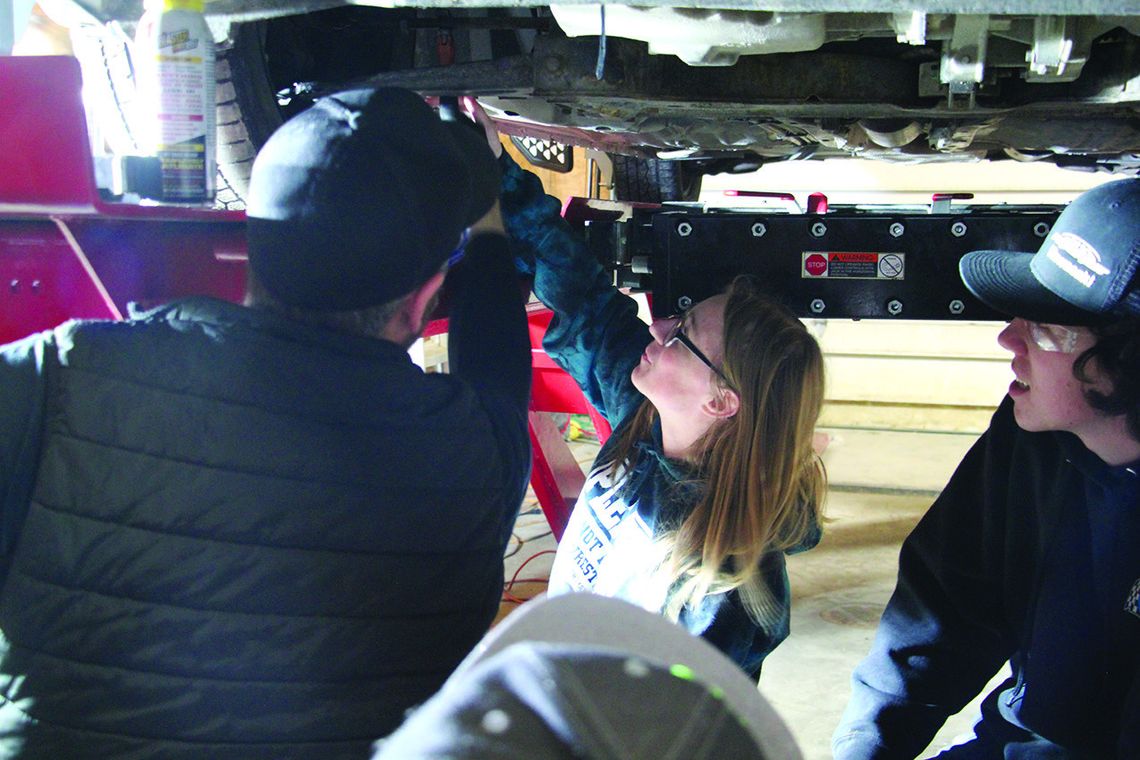Newport CTE students turn passions into careers
NEWPORT — Welding has stuck with Dylan Taxter since eighth grade, when he took a class in it in middle school.
“That interest just sparked,” said Taxter, now a junior at Newport High School. “I’ve just stuck with it ever since.”
That class is one of over 40 the Newport School District offers as part of its career and technical education program. Formerly known as vocational education, CTE allows students to earn licenses and industry certifications, postsecondary certificates and college credit for associate and bachelor’s degrees or higher while attending grade school.
CTE director Saraya Pierce does not know when NHS added CTE courses to its curriculum, but she said they have been there for all 26 years she has worked for the school.
“It gives our students an opportunity to explore areas that they may eventually turn into a career,” Pierce said. “And find areas that they’re passionate about.”
Per state guidelines, the Newport School District offers CTE courses in science, technology, engineering and mathematics as early as seventh and eighth grade. In high school, these options expand to include nine other career pathways ranging from automotive to agricultural education to business, management and administration.
This trimester, nine to 28 students are enrolled in each CTE course. Pierce said all students take CTE courses; CTE courses can earn credits in CTE and English, mathematics or science, and they also meet state requirements for graduation.
“Some of them might take more their junior and senior year, but really, all of our kids take them,” Pierce said. “It’s a pretty inclusive group.”
The CTE program is funded by the state and additional federal grants, Pierce said. Many of these grants go toward industry-standard equipment such as a forklift for welding, construction and automotive technology students, life support manikins for health sciences students and upgrades to the computer lab for science, technology, engineering and mathematics students.
Unlike other classes, many CTE courses give students hands-on instruction with this equipment. Some also take students on field trips and introduce them to guest speakers in their career pathways.
“It just provides more opportunities for all students,” Pierce said. “Each student has a different learning style and a mode that works for them. And this is just kind of a way to help reach all students and keep them actively engaged in their learning.”
As soon as they graduate, students in the CTE program can qualify for full-time careers. One health sciences student who graduated last year has been working as a medical assistant at NEW Health. She even visited this year’s medical assisting class on Feb. 3 as a guest speaker.
“[CTE is] just kind of a nice way for students to enter healthcare and remain in the community or venture out, whichever their preferences are,” Pierce said.
And the careers the CTE program prepares students for are in demand, Pierce said. In Washington, those include careers in health sciences, construction and welding. NHS has six CTE courses in health sciences and a combined five in architecture, construction and manufacturing.
For the next school year, NHS is trying to add early childhood education to the CTE program — a daycare class. This is not to meet state demands, but local ones.
“We have to review that [state] data with our advisory committees to say, ‘OK, do we continue offering these classes? Is there growth in that area?’” Pierce said. “‘If our students chose that as a pathway, are they entering an area where they could find a job and be employed?’” The CTE program also allows students to do co-curriculars. These are career and technical student organizations and clubs associated with CTE courses. Five of them are nationally recognized.
Among them are Future Farmers of America and Target Team for agricultural education students, SkillsUSA for construction and welding students, the Technology Student Association for STEM students and Future Business Leaders of America for business students. Students from these four qualified this year for events on the state level.
“That has helped them grow,” Pierce said. “Especially for all of these kiddos that participate in this to see what’s beyond Newport.”
In the three years after he took welding in middle school, Taxter has competed in welding and fabrication competitions with SkillsUSA, placing second in a regional fabrication competition as part of a team of three and qualifying to compete on the state level.
Taxter also received a welding certification through the CTE program and may work for Northwest Steel Fab in Deer Park as soon as he graduates.
“It’s letting me learn the skills that I’d use on the job site,” Taxter said of the CTE program. “Like how to use certain power tools, the techniques and form to weld properly.”
.png)







